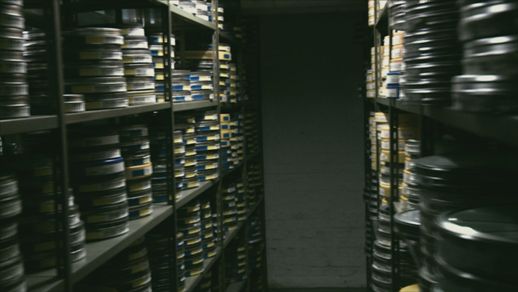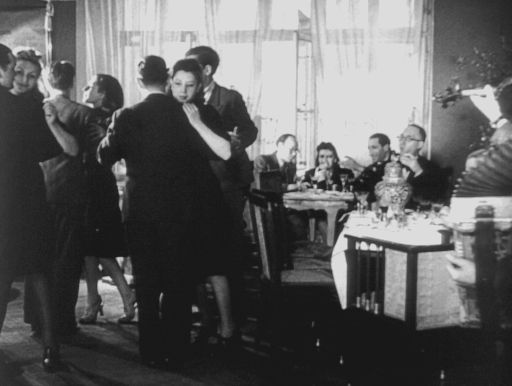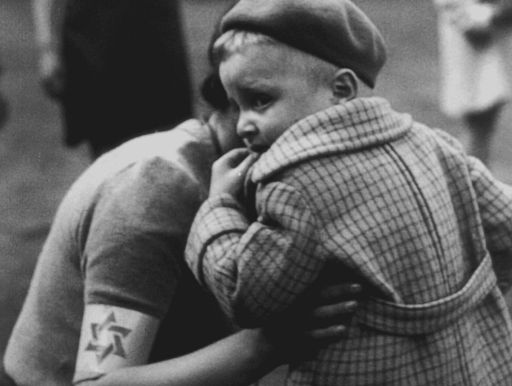
“A Film Unfinished” is not just another Holocaust documentary. Centered on historical documents and archival footage of the Warsaw Ghetto in May of 1942, the film is elevated beyond the genre by its unusual context. The research coup of director Yael Hersonski and her team is remarkable- connecting subjective accounts to physical proof, as in the excerpts presented from the diary of Adam Czerniakow, head of the Judenrat in the Ghetto, describing a meeting that took place in his office with three rabbis. We then see the scene described in archival footage originally intended as a propaganda film made by the Nazis.
Czerniakow had no reason to think that anyone listening would ever see the proof. The film breathes harrowing life into these accounts with the footage, something few testimonials can accomplish in such a direct way. With most other subjects, such a combination can make for a thrilling documentary. In describing the horrors of the Ghetto, this documentary achieves a different stature; it is a tribute to those like Czerniakow, who realized that it was critical to document the incomprehensible. He obviously hoped to offer a corrective to the documentation of the Nazi propaganda ministry, which is the source of the archival footage that ‘A Film Unfinished’ presents and explores. And it is that footage that sets this film apart.
The core of the archival footage in the film was discovered in an East German Bunker in the 1950’s: labeled simply ‘The Ghetto’, with no opening or closing credits, this hour long piece of edited film shows images from the Warsaw Ghetto from May of 1942 (three months before the camp’s liquidation). An important document in and of itself, it has been used by many historians since. More recent discoveries have shed new light on the footage. The first of these discoveries was made at an auction in the former Soviet Union. Color footage of the Ghetto was found, including different angles of images seen in the original film. The second discovery, found at an American Air-Force base in the 1990’s was a reel of ‘outtakes’. These outtakes proved that some of the scenes in the film were staged- several takes of the same scenes are there, and from different angles. These discoveries, never meant to be used in the propaganda film, include brief shots of the different cameramen involved…and it is at this point that director Hersonski enters the picture.

While doing research for a possible film about the archivists who are responsible for the vast amounts of documents surrounding the Holocaust –including controlling the access to these documents- Hersonski and her research team kept hearing about the “mysterious film” about the Warsaw Ghetto. After looking at all the footage that had been found, Hersonski found one key additional document- the protocol of the questioning of a former Nazi cameraman named Willy Wist. In his questioning, Wist confirms that he was one of the cameramen involved, and describes in detail certain scenes within the film. Hersonski also found photographs of Wist, confirming that he was one of the cameramen caught on film in the color footage.
The accumulation of all these overlapping documents inspired Hersonski to make ‘A Film Unfinished’. It is a film about the Ghetto, about the Holocaust, about those who realize the necessity of leaving behind detailed accounts of the horrors. But no less profoundly, it is a film about film.
The key questions hovering over ‘A Film Unfinished’ are what was the intended purpose of the original film, and why was it unfinished?
The answer to the second question appears to be lost to time. Willy Wist says he was not told the ultimate purpose of the footage. But he does venture a guess, based on the scenes he was told to film. Wist was told to show the vast contrasts that existed in the Ghetto- the wealthiest Jews and the poorest ones. As evidenced by Czerniakow’s diaries and the outtakes- the scenes of the wealthy Jews were the staged ones – showing the selfish and greedy hedonists enjoying parties and plays while ignoring their pathetic and decrepit brethren, who are starving and dying in the streets.

For whatever reason, this film was not completed. One can guess that perhaps the Nazis feared that even the most Jew-hating Nazi couldn’t stomach the misery on display. No one knows. As the narration of ‘A Film Unfinished’ stated, the Third Reich was an “Empire infatuated with the camera”, one that “knew so well to document its own evil, passionately, systematically, like no other nation before it”. What Hersonski’s film shows, in fact, is the intrinsic truth that can exist in film.
The original propaganda film was intended as a deception, apparently to show the internal strife within the Jewish population. But nearly 70 years later, the same film stands as historical proof of what really happened. Brian DePalma once said that ‘”The camera lies 24 times a second”. The placement of the camera, the lighting of a scene, the staging of a scene, the choice of when to cut and what to cut to- all choices the filmmaker makes that can interpret, subvert, or pervert that which it is depicting. Through copious research and juxtaposition of various sources, ‘A Film Unfinished’ proves Godard’s axiom- “The camera is truth at 24 frames a second”. No matter what the original intent was –in this case, the most atrocious perversion imaginable- with the right context, the truth exists in the footage, and cannot be denied.

Note: This film has recently received an R rating in the U.S. for “Disturbing images of holocaust atrocities including graphic nudity”. While it is impossible to deny the harrowing nature of what the film depicts, this decision means that the film cannot be shown in schools as a teaching aide. Such an important documentary should be a cornerstone in the teaching of the Holocaust and Nazi propaganda- it is irrational to categorically exclude it for showing the horrors other films might only imply. It is certainly not appropriate for all age groups, but the discerning teacher should not be precluded from showing it to tenth grades simply because history has disturbing images and atrocities.
A Film Unfinished will premiere at the Tel Aviv Cinematheque on November 1, 2010, and at Beit Rishonim in Pardes Hannah on November 4, 2010, and will be screened at the Tel Aviv, Jerusalem and Haifa Cinematheques. Upcoming showtimes:
Tel Aviv Cinematheque – 03-6060800
November 6, 13 & 20 at 17:00
November 8, 15 & 29 at 19:00
November 8, 21 & 29 at 10:00
Jerusalem Cinematheque – 02-5654333
November 6, 13 & 20 at 19:30
Haifa Cinematheque – 04-8104299/302
November 16 at 21:30
SHLOMO PORATH






Comments are closed.